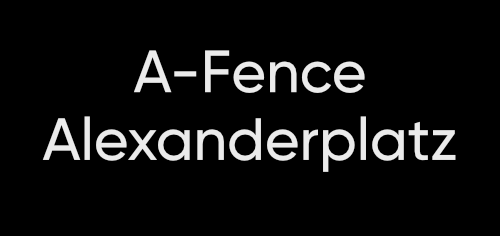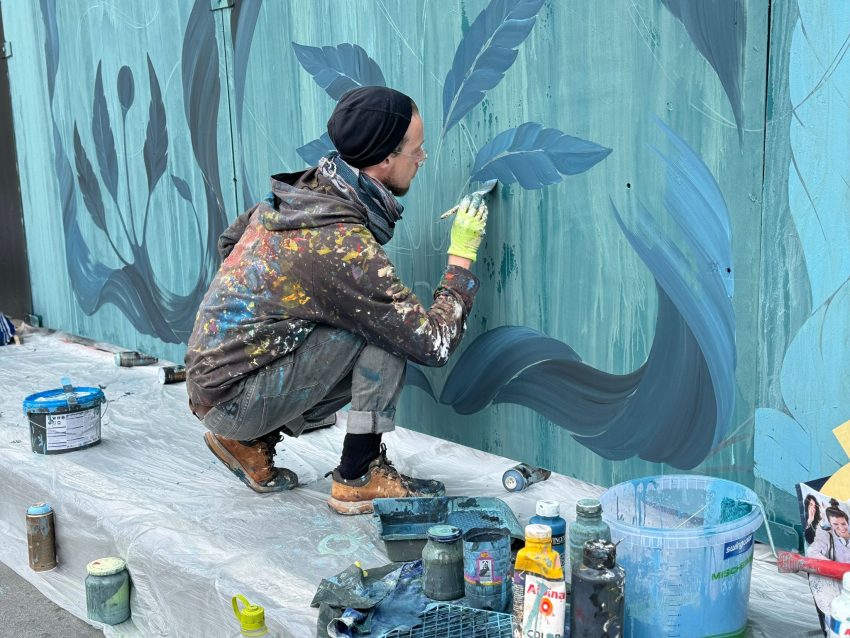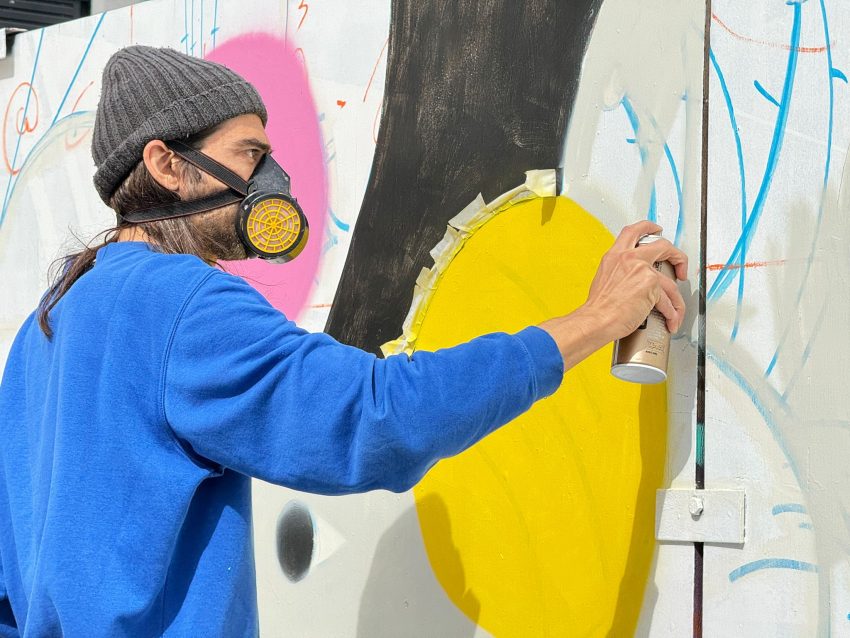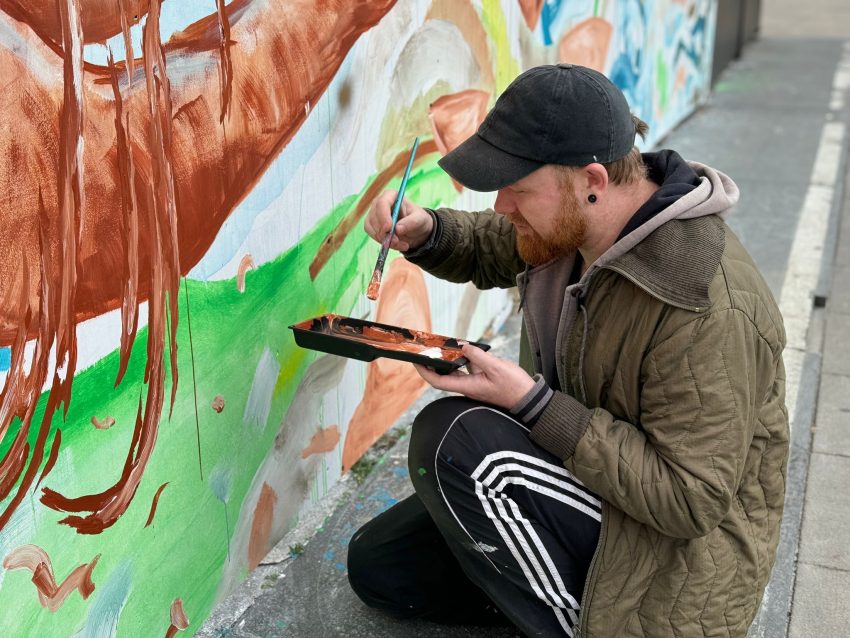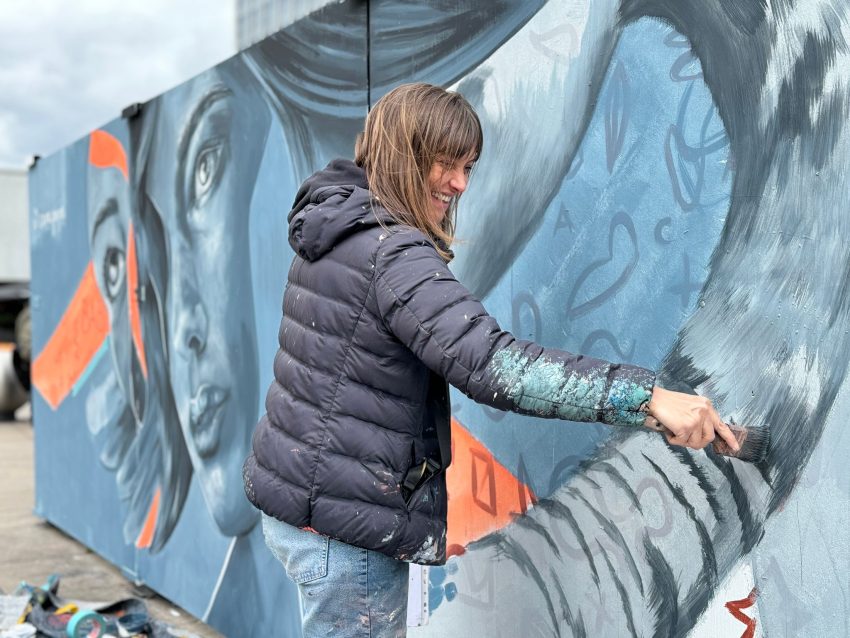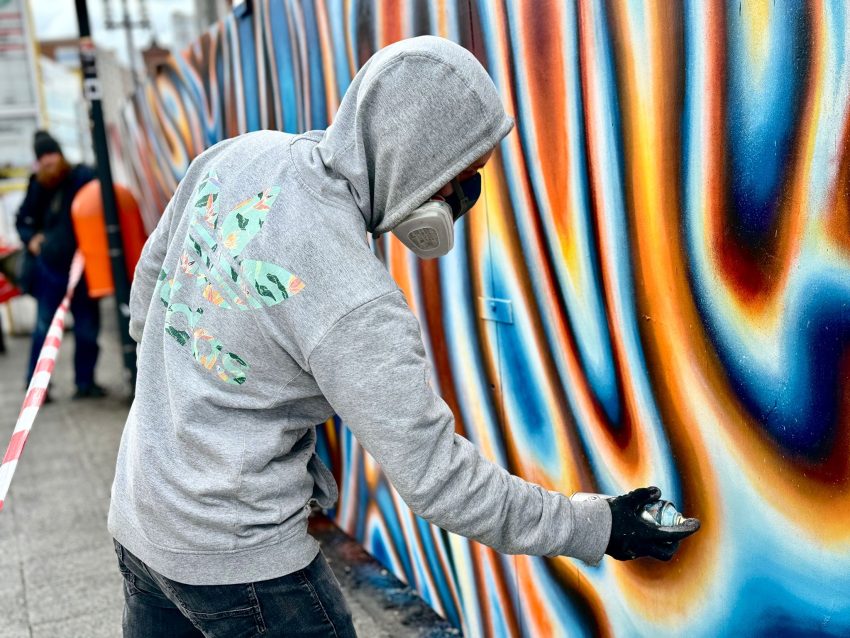About the project
Since 2019, the street art project has surrounded a large construction site belonging to the property company Covivio next to the ParkInn Hotel. Street art pieces by national and international artists design a construction fence approximately 200 metres long and create a new experience for all visitors. From graffiti and impressive murals to imaginative installations, visitors can discover the diversity of street art.
Covivio offers artists an oversized canvas on which they can create a wide variety of artworks on changing themes in the city centre of Berlin. Alexanderplatz combines the diverse aspects of an international urban metropolis and is a landmark and hotspot of the city. A place of history with a transitive character for around 360,000 people, which is both characterised by a historic past and stands for the future development of Berlin's new centre - making Alexanderplatz the perfect location for one of the largest street art galleries in Berlin.
The creative minds behind A-FENCE
Dozens of artists are behind the street art works of A-FENCE. The creative direction lies with the curator of Street Art Berlin, Dr. Diana Marossek. Street Art Berlin organizes local, national, and international art projects, exhibitions, events, murals, commissions, and artist exchanges.
The company behind the Street Art project
European real estate company Covivio promotes the development of artists in the belief that art contributes to the identity of a place and the construction of a shared space, while stimulating exchange and creativity. In 2017, Covivio joined the “1 building, 1 piece of art” program in France, launched in 2015 by the Ministry of Culture. Since then, the company has been implementing this approach in new or renovated buildings in France, Italy, and Germany.
Other Covivio art projects
In addition to A-FENCE, Covivio is also involved in various art projects. Together with the intercultural children's and youth organisation Lebenswelt gGmbH, Covivio initiated a social graffiti project with children and young people under the slogan ‘Anyone can be a graffiti artist’. Guided by Berlin graffiti artists, the young artists painted a wall on a corner building in Berlin-Kreuzberg. Covivio has also been supporting Lebenshilfe projects (a charity project) for many years - including in the Knappenviertel neighbourhood in Oberhausen. The facade of the Covivio building which houses the service centre at Falkensteinstraße 298a/corner of Marienburgstraße was transformed into a colourful and inviting art gallery by people with mental health problems.
STREET ART: HISTORY AND FACTS
What is street art?
Street art is a special form of art that is created publicly on streets, walls, buildings and other urban spaces. It is represented by graffiti, painting, stencils and other creative forms of expression. Street art is a transnational art form that is publicly accessible to everyone. It developed into a significant movement from around the year 2000; before then, only a few artists were active. Since around 2005, this art form has been referred to as street art: Before that, there were also terms such as post-graffiti or urban art that referred to street art. However, street art has established itself as the dominant form of expression.
What is so special about street art?
Street art breaks with the conventions of traditional art: it uses public space and establishes a direct connection with the viewer. It aims to provoke, inspire and provoke thought by bringing art into people's everyday lives and creating an alternative art scene that is accessible to all.
Where can you find street art?
Street art is widespread all over the world. However, street art is also a transient art form. Works can be changed or removed over time. It can therefore be worth exploring street art locations regularly. Here are some places where street art can often be found:
- Large cities and metropolitan areas. In these cities, there are often certain neighborhoods or streets that are famous for their street art culture.
- Industrial areas: These places can become street art hotspots.
- Neighborhoods with alternative culture: Street art is often found in alternative neighborhoods with a lively cultural scene.
- Abandoned places: former military installations, old hospitals, empty administrative buildings, etc.
What is the difference between graffiti and street art?
The difference between graffiti and street art lies primarily in the form of expression itself: graffiti is predominantly sprayed letters, while street art uses various techniques (including painting, printing, stencils). The approach and perception is also different. Graffiti is often sprayed without permission or illegally. Street art, on the other hand, is a broader art form that encompasses various forms of creative expression on public streets and in urban areas. In contrast to graffiti, street art is often created with the owner's permission or as part of art projects and festivals.
